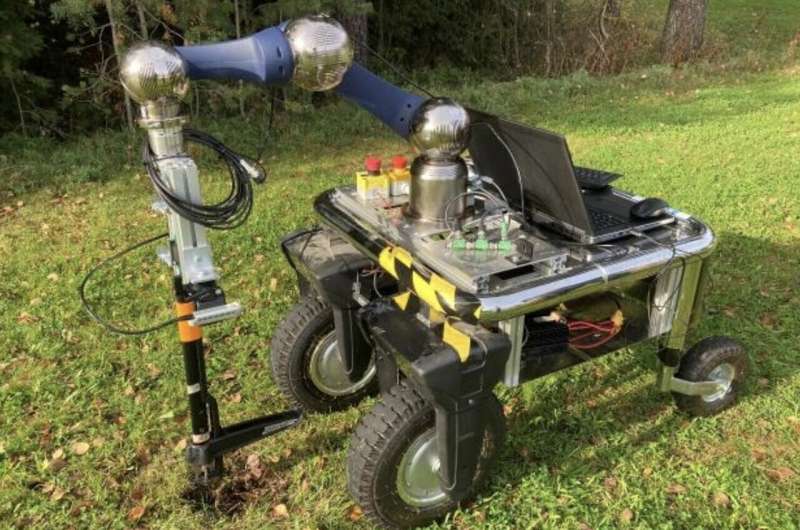
Robotic systems are already being deployed in various settings worldwide, assisting humans with a highly diverse range of tasks. One sector in which robots could prove particularly advantageous is agriculture, where they could complete demanding manual tasks faster and more efficiently.
Among the many agricultural tasks that robots could tackle is the removal of weeds, which can cause significant damage to both livestock and crop farming. In fact, fast-growing and invasive weeds can both reduce the yield of crops and potentially poison animals, including horses, sheep, and cows.
Researchers at VVT Technical Research Centre of Finland Ltd recently developed a new robot that can autonomously remove an invasive weed known as Rumex longifolius, or longleaf dock, which are highly rich in oxalates, compounds that can be poisonous to some livestock. Their robot, introduced in a paper pre-published on arXiv.
“Automatic weeding technologies have attained a lot of attention lately, because of the harms and challenges weeds are causing for livestock farming, in addition to that weeds reduce yields,” Jarkko Kotaniemi, Niko Känsäkoski and Tapio Heikkilä wrote in their paper.
“We are targeting automatic and mechanical Rumex weeding in open pasture fields using lightweight mobile field robot technologies. We describe a mobile weeding robot with GNSS navigation, 3D computer vision for weed detection, and a robot arm with a mechanical weeding tool.”
The weed removal robot developed by Kotaniemi, Känsäkoski and Heikkilä is designed to mechanically remove Rumex weeds when they are still seedlings. Removing these plants as seedlings, while destroying their roots, is highly preferable over the use of herbicides, as it limits damage to the environment and the health of humans consuming nearby crops.
In their previous papers, the researchers had introduced a computer vision-based approach to detect and localize Rumex weed. Their new paper built on these previous efforts to develop a robotic platform that could remove the weeds identified by the computer vision model.
To plan the robot’s weeding missions, the researchers utilized a multi-layered control approach. This approach divides weed removal tasks into three smaller sets of actions, including navigating the robot towards a weed, detecting this weed and finally removing it.
“The goal for weed removal is given as a weeding mission, which is set by a weed map of weed locations in the pasture field,” the researchers wrote.
“The mission consists of tasks for moving the platform, detecting weeds, and performing the weeding action for all the weeds in sequence listed in the weed map,” the researchers wrote in their paper. “Each task is composed in a fixed manner of primitive actions like robot arm motions, image acquisition, and navigation actions.”
Kotaniemi, Känsäkoski and Heikkilä have already tested their robotic platforming in real-world environments, performing a series of tests outdoors in a grass field. They found that it was highly effective and could reliably remove Rumex weeds, yet its ability to detect the weeds was often reduced in cluttered or highly bright environments.
In the future, they could try to further improve the robot’s detection capabilities, to facilitate its potential commercialization and use by farmers.
“We have presented an automatic mechanical weeding robot that removes weeds from pastures without the use of herbicides,” Kotaniemi, Känsäkoski and Heikkilä concluded in their paper. “It is based on a lightweight mobile platform, lightweight robot arm with a force/torque sensor, consumer grade 3D camera, and weeding tool. Tests in a real pasture have shown the feasibility of these technologies for robotic weeding.”
More information:
Jarkko Kotaniemi et al, A Weeding Robot for Seedling Removal, arXiv (2024). DOI: 10.48550/arxiv.2405.12596
© 2024 Science X Network
Citation:
A weeding robot that can autonomously remove seedlings (2024, June 12)
retrieved 26 June 2024
from https://techxplore.com/news/2024-06-weeding-robot-autonomously-seedlings.html
This document is subject to copyright. Apart from any fair dealing for the purpose of private study or research, no
part may be reproduced without the written permission. The content is provided for information purposes only.




